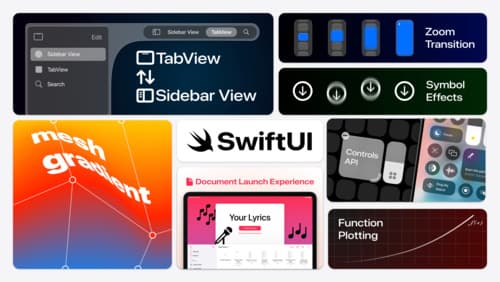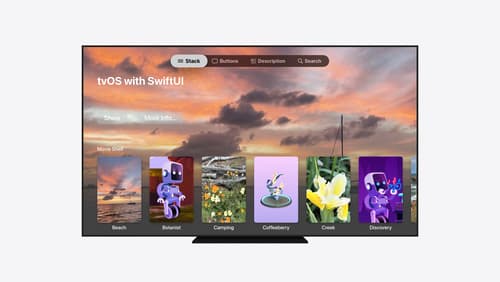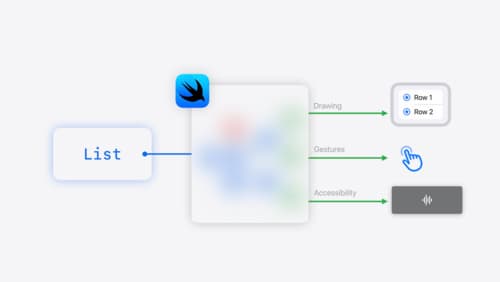simplify swiftui
Asked on 2025-05-08
1 search
SwiftUI is designed to simplify the process of building user interfaces across all Apple devices. It allows developers to focus on describing the UI they want, while SwiftUI handles the details like dark mode, dynamic type, and model changes. This approach enables code sharing across devices and reduces the amount of code needed to build interfaces.
Key features of SwiftUI include:
- Declarative Syntax: You describe what you want the UI to look like, and SwiftUI takes care of rendering it. This makes the code more readable and easier to maintain.
- Compositional and State-Driven Views: SwiftUI views are compositional, meaning you can build complex interfaces by combining simpler views. They are also state-driven, automatically updating the UI when the underlying data changes.
- Built-in Capabilities: SwiftUI provides a wide range of built-in views and modifiers, such as buttons, toggles, and lists, which can be customized to fit your needs.
- Interoperability: SwiftUI can be integrated with existing UIKit or AppKit views, allowing for incremental adoption in existing apps.
For more details on SwiftUI, you can refer to the SwiftUI essentials session, which covers the fundamentals of views and their capabilities. Additionally, the Platforms State of the Union session provides an overview of SwiftUI's role in Apple's ecosystem.

What’s new in SwiftUI
Learn how you can use SwiftUI to build great apps for any Apple platform. Explore a fresh new look and feel for tabs and documents on iPadOS. Improve your window management with new windowing APIs, and gain more control over immersive spaces and volumes in your visionOS apps. We’ll also take you through other exciting refinements that help you make expressive charts, customize and layout text, and so much more.

Migrate your TVML app to SwiftUI
SwiftUI helps you build great apps on all Apple platforms and is the preferred toolkit for bringing your content into the living room with tvOS 18. Learn how to use SwiftUI to create familiar layouts and controls from TVMLKit, and get tips and best practices.

SwiftUI essentials
Join us on a tour of SwiftUI, Apple’s declarative user interface framework. Learn essential concepts for building apps in SwiftUI, like views, state variables, and layout. Discover the breadth of APIs for building fully featured experiences and crafting unique custom components. Whether you’re brand new to SwiftUI or an experienced developer, you’ll learn how to take advantage of what SwiftUI has to offer when building great apps.
